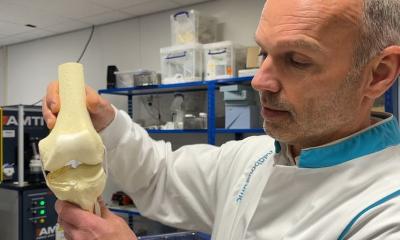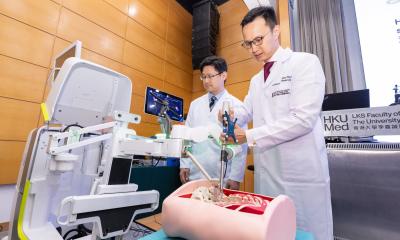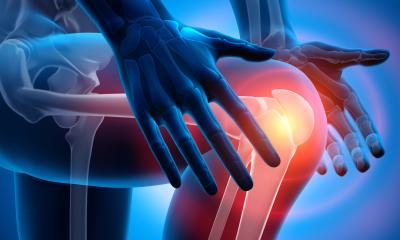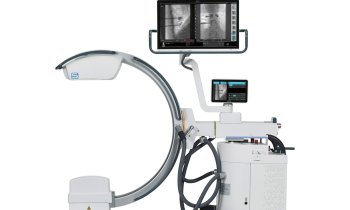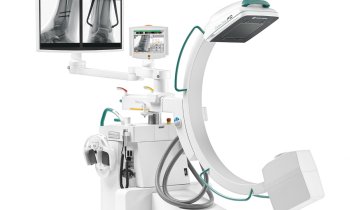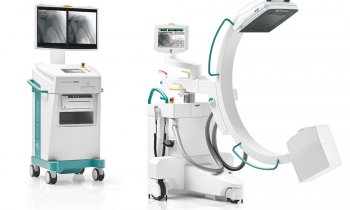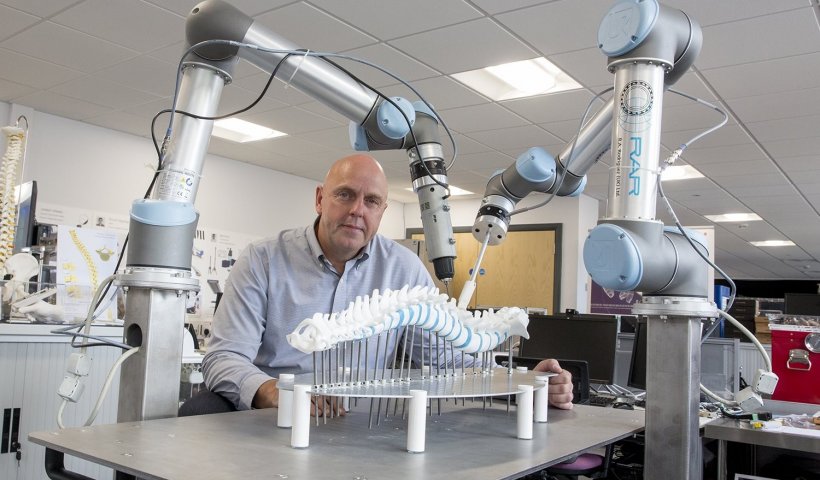
Article • 'ScoliBot' offers superhuman precision
New robots improve spinal straightening
ScoliBot, a new robotic system, could perform spinal surgery to a higher degree of accuracy than human counterparts.
Report: Mark Nicholls
Devised by a team from Nottingham Trent University (NTU), the system has two robotic arms that semi-autonomously drill holes in individual vertebrae in procedures to straighten the spines of patients with conditions such as scoliosis or kyphosis. Leading the project, Professor Philip Breedon, head of NTU’s Medical Engineering Design Research Group, says the technology could deliver higher levels of accuracy than achieved previously as a result of the robotic arms being able to move in unison and naturally with the patient’s spine during the operation while drilling. ‘Surgeons performing life-changing operations to correct spinal conditions have to ensure pinpoint levels of accuracy to avoid causing unnecessary and potentially serious injuries,’ he stressed.
Robotic teamwork
‘This technology promises to deliver greater levels of accuracy than ever previously achieved – or even humanly possible – to improve the safety and efficiency of such procedures that are needed by people with serious spinal conditions.’
The holes drilled in the vertebrae are used to insert pedicle screws, which are attached to deformity rod reducers that allow surgeons to lever individual vertebrae and realign the spine. Known as the datum and tooling robots, the two robotic arms work in collaboration during the procedure. The datum robot is secured to vertebrae and moves with them to follow the natural movements of the patient, instantly relaying data on this movement to a computer. The tooling robot then adjusts automatically so that it remains on its pre-defined path and continues to drill accurately.
Reduction of surgery time
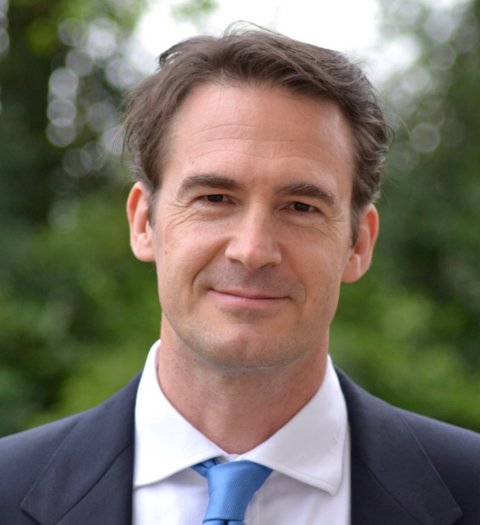
The patient could benefit because the robot’s reliability and precision will enable specific surgical steps to be performed more precisely,’ Breedon observed. ‘Ultimately, the aim is also to reduce surgery time.’
The research also explores the use of augmented reality (AR) to provide surgeons with live visual feedback to illustrate the depth of each hole as it is drilled in real-time. Accuracy of drilling has been recorded at 0.1 of a millimetre. ‘The control system will engage with the patient’s body by providing a superimposed image on the surface of a patient, or in the visual field of the surgeon utilising wearable technology,’ Breedon added. He is working closely on the project with Professor Bronek Boszczyk, Head of the Spine and Scoliosis Centre, Schoen Clinic, Vogtareuth, Germany, and Nottingham University Hospitals Trust UK, who explained that the system also offers potential advantages for the surgeon. ‘Certain surgical steps can be quite physical for the surgeon and fatiguing,’ he said. ‘The introduction of the robotic system means that surgery could be performed without any muscle tremor, very precisely and without fatigue often associated with repetitive tasks.
Total accuracy required
This technology has the potential to minimise those risks by performing a key part of the operation with accuracy that cannot be achieved by a human hand
Bronek Boszczyk
‘The robot, or robots, could also be useful as a “surgical assistant”. This is another area of research and development we are currently exploring. It’s paramount that spinal procedures are carried out with total accuracy in order to minimise what can be substantial risks to a patient. This technology has the potential to minimise those risks by performing a key part of the operation with accuracy that cannot be achieved by a human hand.’ Describing it as ‘a brilliant example of how robotics can enhance and improve the way in which intrusive operations are carried out’, he said the system can improve patient safety and whilst ensuring efficiency of process.
While the development team sees the current system best linked to surgical interventions on bones, because they provide a hard interface for the robot to engage with, they also envisage that the collaborative robotic system in the future could be used in endoscopy and keyhole procedures.
Profiles:
Philip Breedon is Professor of Smart Technologies at Nottingham Trent University and leads the Medical Engineering Design Research Group. His research interests centre on new and emerging technologies and materials, including wearables, 3-D printing of pathological models, the surgical pathway additive and subtractive manufacturing for medical applications, biomimetics, surgical robotics, and extended reality systems.
Professor Bronek Boszczyk is Head of the Spine & Scoliosis Centre, Schoen Clinic, Vogtareuth, Germany and Honorary Clinical Associate Professor at the Division of Orthopaedic and Accident Surgery and a Visiting Professor to Nottingham Trent University. His research focuses on spinal disorders.
19.11.2019



